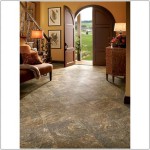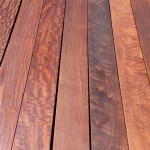The Best Way To Lay Wood Flooring
Laying wood flooring is a great way to add warmth and beauty to your home. It's also relatively easy to do yourself, even if you're a beginner. Here are some of the essential aspects to consider when laying wood flooring:
1. Choosing the Right Wood
The first step is to choose the right type of wood for your needs. There are many different types of wood flooring available, each with its own unique look and feel. Some of the most popular types include oak, maple, cherry, and walnut.
When choosing a type of wood, consider the following factors:
- Durability: Some woods are more durable than others. If you're looking for a floor that will last for many years, choose a hardwood such as oak or maple.
- Hardness: The hardness of a wood is measured on the Janka scale. The higher the Janka rating, the harder the wood. Hardwoods have a higher Janka rating than softwoods.
- Appearance: Wood flooring comes in a variety of colors and grains. Choose a wood that matches the style of your home.
- Cost: Wood flooring can vary in price depending on the type of wood, the finish, and the size of the planks.
2. Preparing the Subfloor
Once you've chosen your wood, you need to prepare the subfloor. The subfloor is the surface that the wood flooring will be installed on. It must be level, smooth, and dry.
To prepare the subfloor, follow these steps:
- Remove any existing flooring.
- Level the subfloor. You can use a self-leveling compound or a leveling tool.
- Smooth the subfloor. You can use a sander or a planer.
- Dry the subfloor. You can use a fan or a dehumidifier.
3. Installing the Wood Flooring
Once the subfloor is prepared, you can begin installing the wood flooring. There are two main methods for installing wood flooring: nailing and floating.
Nailing: Nailing is the traditional method for installing wood flooring. The planks are nailed to the subfloor using a flooring nailer.
Floating: Floating is a newer method for installing wood flooring. The planks are not nailed to the subfloor. Instead, they are held in place by a combination of glue and a locking system.
4. Finishing the Wood Flooring
Once the wood flooring is installed, you need to finish it. The finish you choose will protect the floor from wear and tear and give it a beautiful shine.
There are many different types of finishes available, including:
- Polyurethane: Polyurethane is a durable and easy-to-apply finish. It is available in a variety of sheens, from matte to high-gloss.
- Oil: Oil is a natural finish that gives wood flooring a warm and inviting look. It is not as durable as polyurethane, but it is easier to repair.
- Wax: Wax is a traditional finish that gives wood flooring a soft and satiny feel. It is not as durable as polyurethane or oil, but it is easy to apply.

Determining The Direction To Lay Install Hardwood Laminate Or Luxury Vinyl Plank Flooring

Hardwood Flooring Installation Step By Forbes Home

Installation Methods For Wooden Floor Craftedforlife

How To Install Lock Engineered Hardwood Flooring

How To Install A Hardwood Floor Build This Weekend

How To Install Oak Hardwood Floors Young House Love

Hardwood Floor Direction Guide How To Lay Wood Flooring

How To Install Hardwood Flooring Young House Love

The Best Direction To Lay Hardwood Flooring Elite

How Long Does It Take To Install Hardwood Floors Cameron The Sandman Wood Flooring Contractor
See Also






